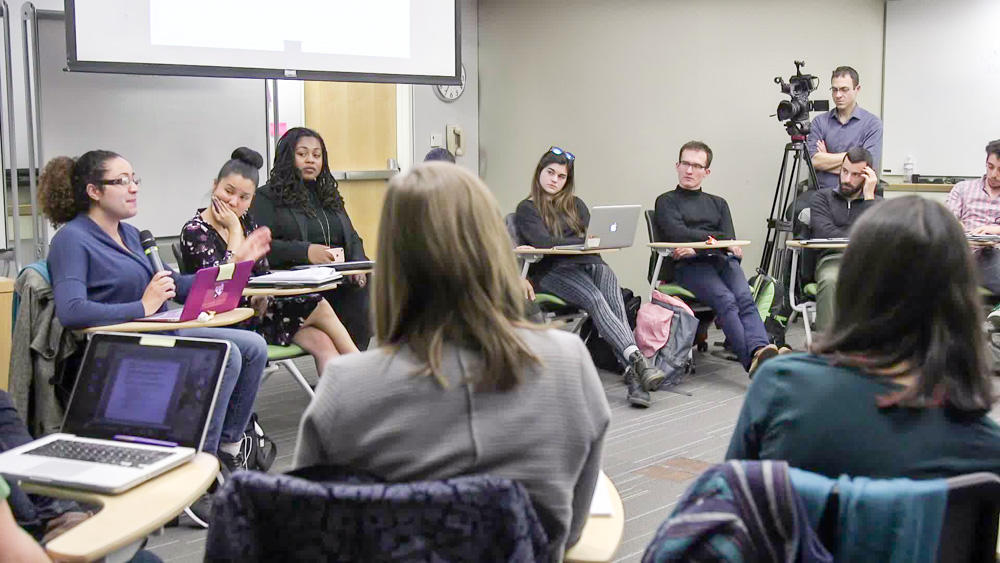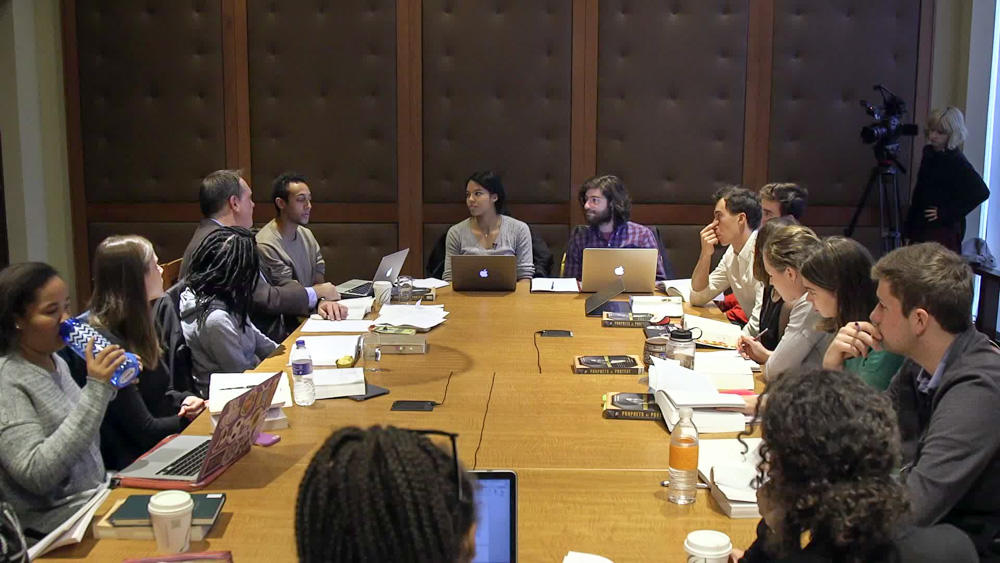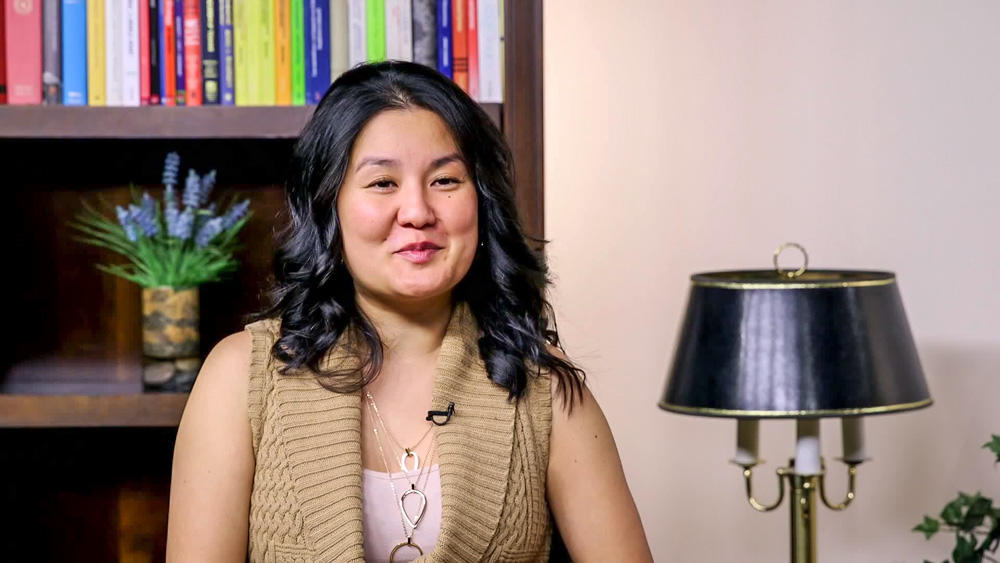Classrooms have traditionally been built on a number of hierarchies: Instructors hold more knowledge and power than students, the right answers count for more than the wrong ones, and students with more experience in and knowledge of the subject are “smarter” than their peers with less experience and subject knowledge. In this module, we’ll learn how to challenge these traditional hierarchies to create classrooms that center students as knowledge holders and creators, turn the “wrong” answer into a learning opportunity, and highlight the knowledge and strengths that all students bring to the classroom.
Pathway 2: Disrupting Traditional Classroom Hierarchies
Pathway Steps
Step 1: Fostering an Environment Where Everyone is a Teacher and Learner

Fostering an Environment Where Everyone is a Teacher and Learner
In equitable classrooms, everyone is both a teacher and a learner, even the instructor. Certainly instructors have expertise and experience, and it’s important to share that knowledge with students. However, even experts have areas for growth and questions they continue to puzzle over.
Step 2: Using the Physical Space to Disrupt Hierarchies

Using the Physical Space to Disrupt Hierarchies
The physical setup of the classroom can signal that everyone in the room is both a teacher and a learner.
Step 3: Intervening Selectively to Enhance Equity and Understanding

Intervening Selectively to Enhance Equity and Understanding
Instructors can easily take up too much space in the classroom as highly-educated experts. This dominance can be particularly pronounced if they also hold a lot of privileged identities.
Step 4: Centering Students as Discussion Leaders

Centering Students as Discussion Leaders
To disrupt traditional hierarchies, instructors can step out of the way and allow students to take center stage. But positioning students as holders and creators of knowledge can be challenging. Not all students will be comfortable stepping into these roles immediately.
Step 5: Using Technology to Elevate Student Thinking

Using Technology to Elevate Student Thinking
While Timothy Patrick McCarthy uses classroom discussion to position students as knowledge holders, Dan Levy uses technology. By giving his students an iPad to solve problems on the projection screen, he reduces barriers for students to share their thinking with the class.
Step 6: Finding Value in Wrong Answers

Finding Value in Wrong Answers
In many classrooms, there’s a strict hierarchy for student responses: right answers are valuable while wrong answers are not. But mistakes are a critical part of learning, and even “wrong” answers can contain nuggets of brilliance.
Step 7: Nurturing Voices that Challenge the Dominant Narrative

Nurturing Voices that Challenge the Dominant Narrative
In addition to the hierarchy that tends to discount the value in wrong answers, there’s often an epistemological hierarchy in disciplines, placing dominant narratives at the top and counternarratives at the bottom. By working to lift up counternarratives, instructors can create an inclusive and equitable environment where students from historically excluded groups see that their experiences and knowledge are valuable.
Pathway 2 Conclusion
Conclusion
Postsecondary classrooms are often built on a number of traditional hierarchies, so ingrained in higher education that they may be difficult to notice at first. Change won’t happen overnight, but continually reflecting on the questions and issues raised in this pathway can help you create a more equitable classroom that centers learners, values all knowledge, and welcomes historically underrepresented voices.
Kishimoto argues that to create anti-racist classrooms, instructors must engage in critical self-reflection about their own social position (2016).
Wrong answers and student misconceptions can be used to design effective learning experiences (Tanner & Allen, 2005).
Surfacing student misconceptions and errors enhances learning and promotes engagement when instructors provide corrective feedback and explanation (Metcalfe, 2017).
A study shows that when afforded opportunities to lead as instructors or discussion facilitators, students report rates of higher satisfaction and emotional investment in their learning processes (Kurczek & Johnson, 2014).
Corbett and Wilson argue that literature promoting educational reform should consider students as partners and educators should think of students as “participants,” suggesting student ownership of the classroom can advance educational reform (1995).
In one study that examined partnerships between postsecondary students and instructors in course development, researchers found that when the instructors positioned themselves as learners, the students developed more confidence as “knowers” (de Bie et al., 2019, p. 40).
The Eberly Center for Teaching Excellence & Educational Innovation at Carnegie Mellon University provides valuable considerations for Teaching Across Cultures, which can be helpful as instructors reflect on the ways that their identities influence their teaching.
The Harvard Graduate School of Education has created an Inclusive Syllabus Tool to help you gauge whether your curriculum is inclusive of multiple perspectives, voices, and experiences.
“Teaching with Discussions” from The Teaching Center at Washington University in St. Louis offers tips for instructors before, during, and after discussion, including how to create a comfortable non-threatening environment from the first class onward.
This Harvard article explores ways to disrupt classroom hegemonies, including emphasizing to students that they are “intellectual peers with the professor.”
Published in 1994, bell hooks’ Teaching to Transgress remains a seminal work for educators seeking to create equitable classrooms where students learn to examine and challenge injustice.
Paolo Frieire’s influential Pedagogy of the Oppressed critiques the traditional “banking” model of education and proposes an alternative: education as the practice of freedom.
This guide from BU on teaching the hidden curriculum helps instructors analyze the ways that unquestioned norms and assumptions on postsecondary campuses cause some students to struggle and explores how instructors can help bring the hidden curriculum into the light for their students.
This lesson plan for critiquing dominant narratives from the University of Michigan offers two options for structuring the discussion, along with specialized tips for STEM educators.

